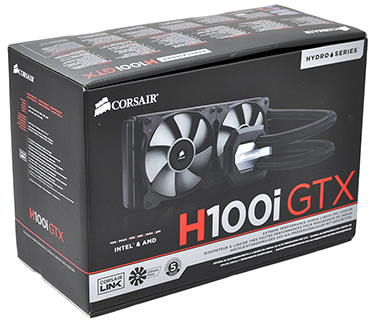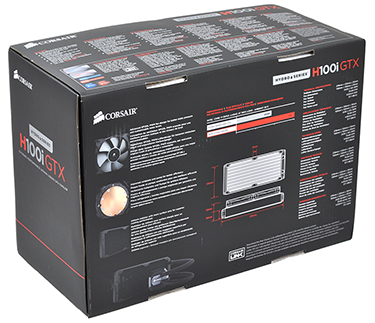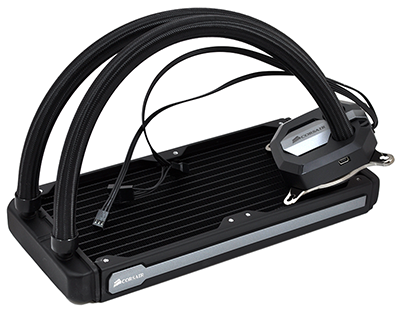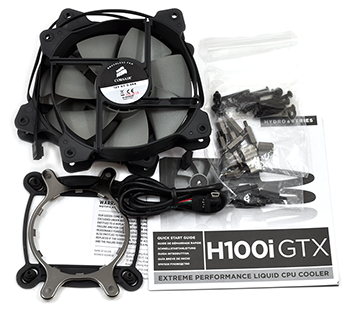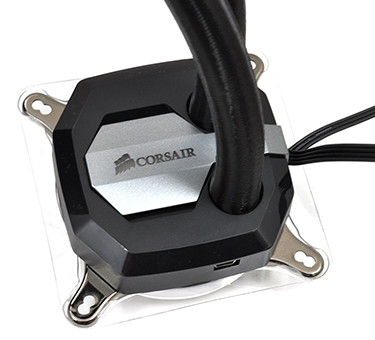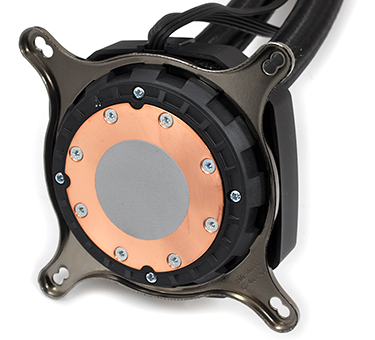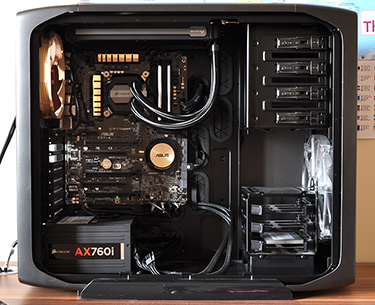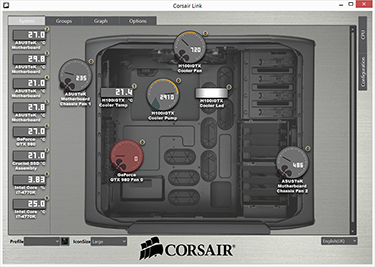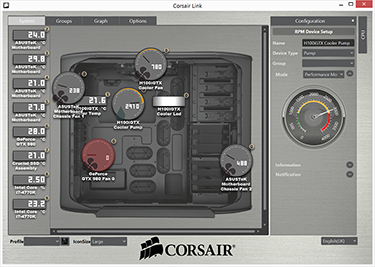Introduction
It's fair to say that Corsair (or Asetek, if you're being pedantic) revolutionised the enthusiast cooling scene with the launch of Hydro Series all-in-one liquid coolers way back in 2009. The self-contained units brought the benefits of liquid cooling to the masses in a single, easy-to-manage solution, and the Hydro Series' huge popularity has led to many rival manufacturers dipping their toes into liquid-cooled waters.
But can the same formula continue to prove successful in the years to come? Times are changing, and in the self-build space, processor TDPs are tumbling, moving parts are becoming less favourable and noise levels are at an all-time low. So are premium all-in-one liquid coolers still relevant? To find out, we're taking a look at one of Corsair's latest offerings, the Hydro Series H100i GTX.
Priced at £97, the H100i GTX is the company's latest cooler to feature a 240mm radiator and slots in between the smaller H80i GT (120mm, £81) and larger H110i GT (280mm, £101).
That's a lot of money to pay for a CPU cooler, but the Hydro Series carries brand power and if it's extreme performance you're after, the H100i GTX touts "the excellent heat dissipation you need for highly overclocked CPUs." Marketing promises aside, what's likely to make this particular model a popular choice is the form factor: a 240mm radiator will fit in most high-performance chassis, and Corsair's refreshed design does look the part.
As part of a new "industrial design," removable caps have been added to the radiator and pump to provide the modding community another avenue toward end-user customisation. Even without any mods, the pump and rad look tough and well-put together, and if you like a bit of bling, the Corsair logo on the pump is backlit with an RGB LED.
Corsair Link is integrated as standard, with a USB cable attaching to the pump's bottom edge and requiring a USB 2.0 header on your motherboard, and all the required fixings are supplied for the latest Intel and AMD sockets. The two four-pin fans included in the bundle are identified as model number Corsair SP120L and both connect directly to a splitter cable emanating from the pump's side, while a single three-pin cable is used to supply the pump with power.
True to form, installation is a doddle and should feel familiar to anyone who has used an earlier Hydro Series cooler. You begin by fixing the backplate to the motherboard using the supplied standoffs, and the pump is then clamped on top using four thumb screws. Pre-applied thermal paste makes the initial installation even easier, but despite our frequent protestations, no extra paste is provided in the bundle so you're on your own when it comes to subsequent mountings.
Flexible rubber tubing makes radiator placement simple and straightforward, and of course if your chassis has room, you could add a further two fans in a push-pull configuration. Our pictured installation has the two provided fans mounted in the roof of our Graphite Series 600T chassis, and the setup showcases one of the key benefits of a Hydro Series cooler: it frees up a lot of room around the CPU socket and makes for a tidy-looking build.
Once the hardware is in place, it's worth noting that the H100i GTX will function just fine as a plug-and-play solution, but if you do want more granular control, Corsair's Link software is at hand. Using the GUI, enthusiasts can customise the colour of the pump's backlight, toggle pump speed between quiet and performance, and tune fan speeds using a temperature-linked curve.
A handy companion if you like to keep a close eye on temps, however the Link software hasn't developed at a great pace and due to ongoing bugs can at times feel like a chore as opposed to a genuine value-add. Enthusiasts may want to tinker, but if you'd prefer not to install an additional software layer, the H100i GTX will function perfectly well without, and there will be one fewer cable to contend with.
In summary, the hardware's still easy to use, it looks better than ever, and though the software hasn't caught up, there's a lot of cooling potential on offer in one simple-to-setup package. Let's now take a look at performance.






